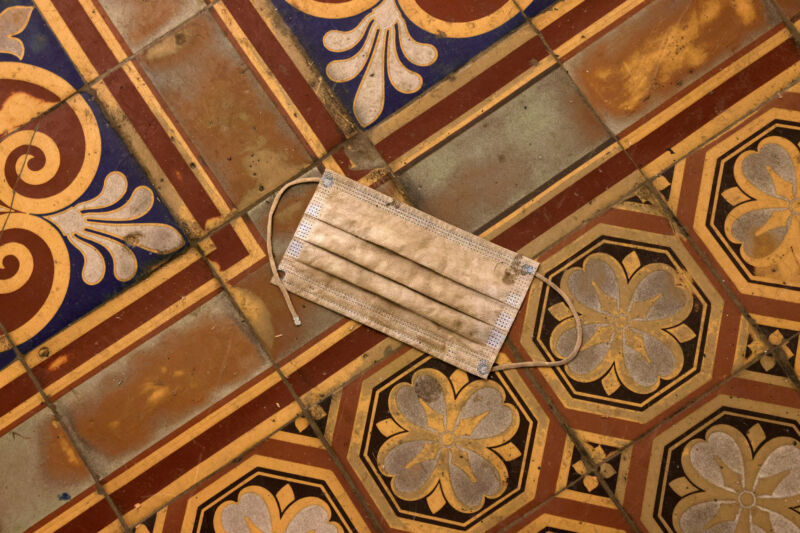
Enlarge / A mask is left behind in a hallway at the US Capitol January 7, 2021, in Washington, DC. The US Congress has finished the certification for President-elect Joe Biden and Vice President-elect Kamala Harris' Electoral College win after pro-Trump mobs stormed the Capitol and temporarily stopped the process. (credit: Getty | Alex Wong)
Yesterday's disgraceful and violent insurrection will stand as one of the darkest moments in American history. But it could also be yet another dark point in the ongoing pandemic, which—in case you got distracted—is still spreading out of control and devastating much of the country.
As seditionists entered the United States Capitol building Wednesday, health officials around the country logged more than 243,000 new cases of COVID-19. Hospitals tallied nearly 132,500 COVID-19 patients in their beds. And at least 3,793 American lost their lives to the pandemic virus. With surge upon surge of disease, over 21 million people in the US have been infected and over 352,000 loved ones are dead.
Fuel on the inferno
The pandemic did not pause for those in the District of Columbia on Wednesday. Like many places, Washington has seen an increase in cases and deaths amid winter holidays. During the president's insurrection, the capital reported 316 new cases—a sharp rise from the seven-day rolling average of 86 new cases per day logged on November 1. There were also five new deaths Wednesday, up from an average of one November 1. Overall, the city of more than 700,000 residents has reported a total of nearly 30,500 cases and over 800 deaths since the beginning of the pandemic.
No comments:
Post a Comment